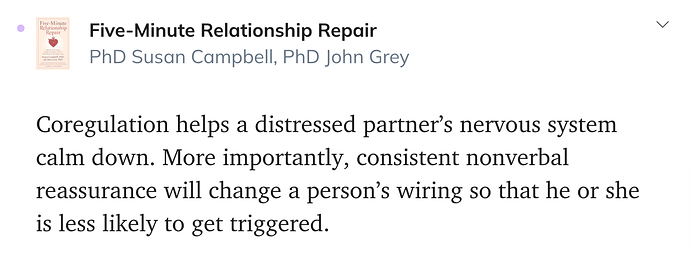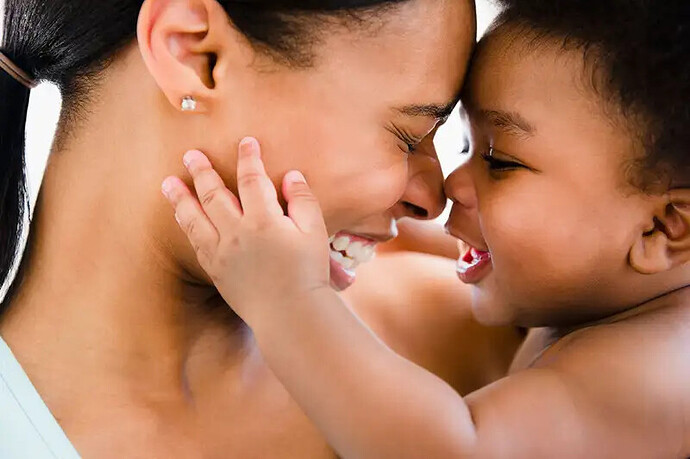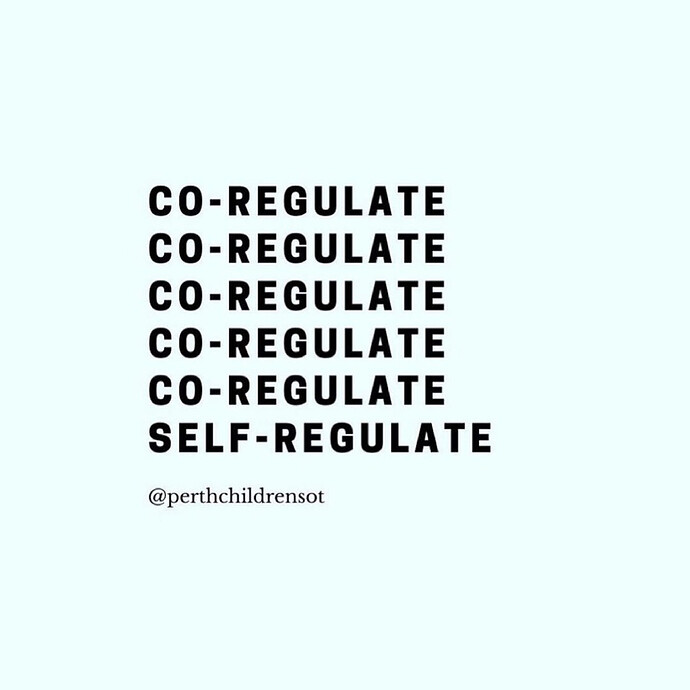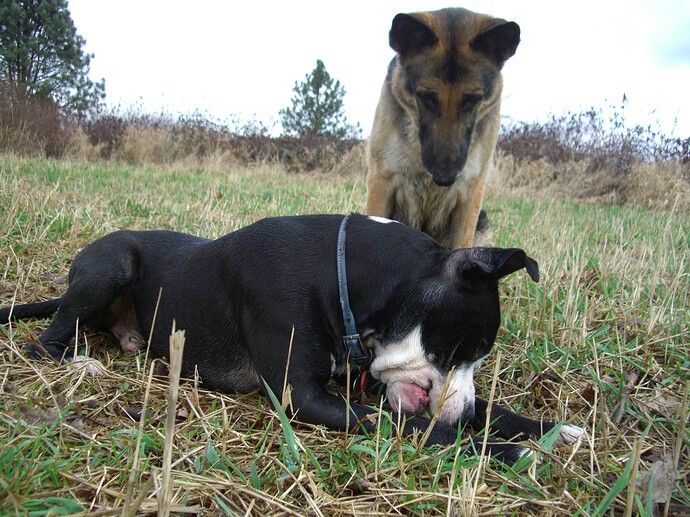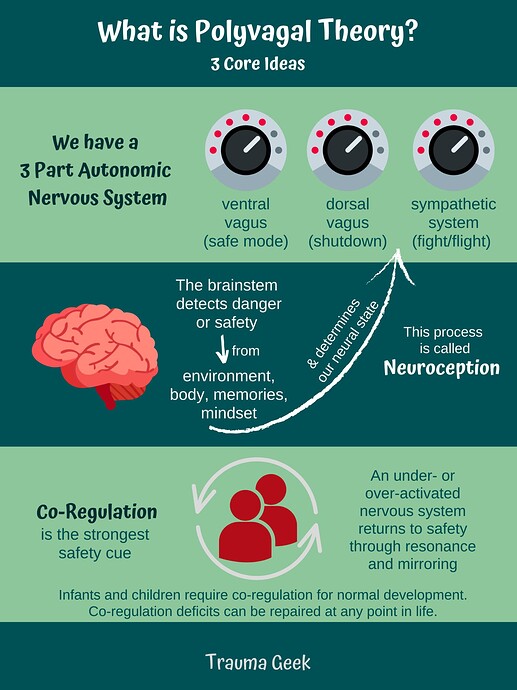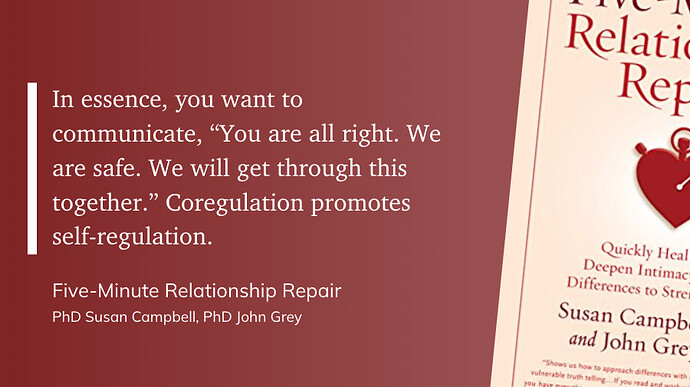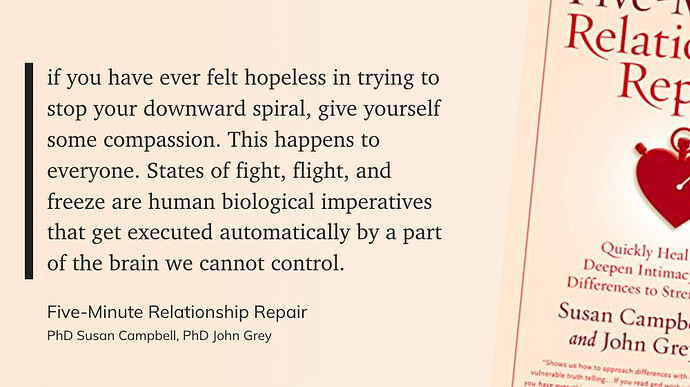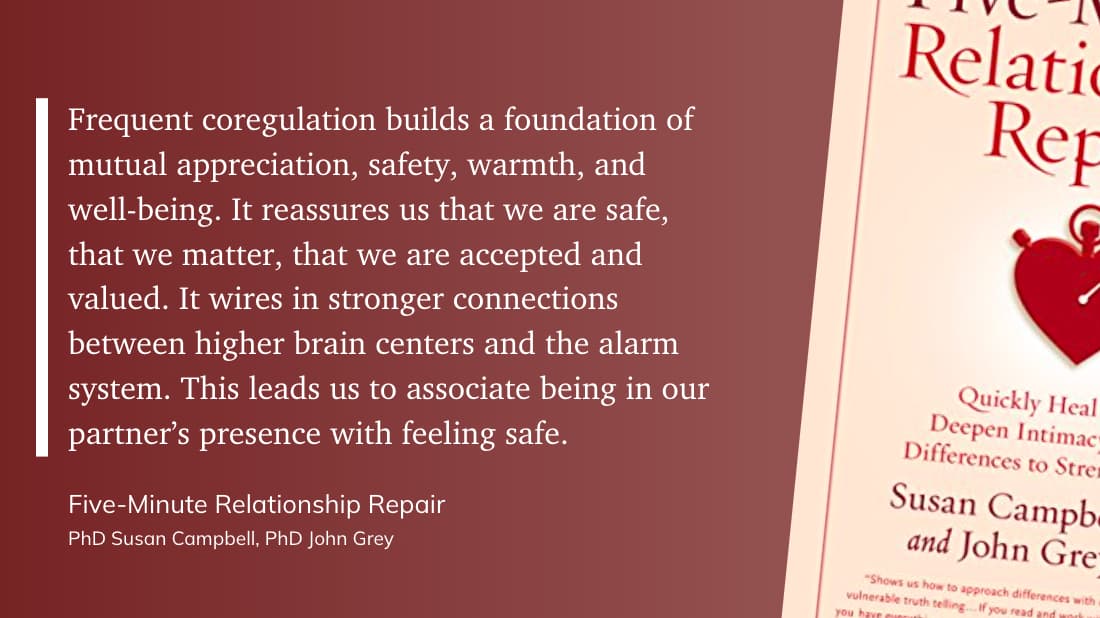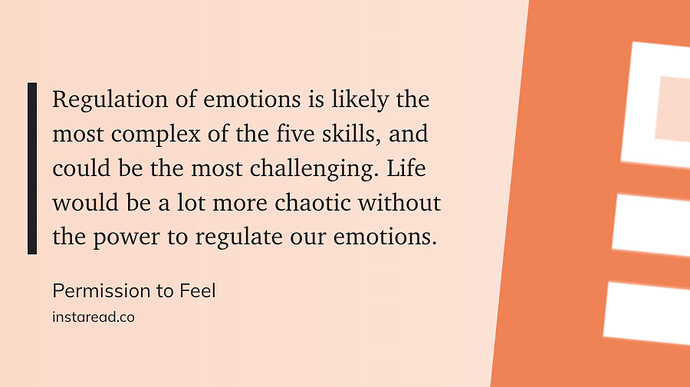Co-Regulation
Co-regulation occurs when we allow ourselves to tune to another presence that radiates more solidness, balance, presence, and harmony than we currently feel. The process is natural and tends to improve the emotional resilience of all living beings.
- Co-regulation builds resilience in our neural pathways, allowing both faster recovery and less frequent triggering.
- Regular co-regulation helps us feel more supported and safe in our primitive brain.
- Regulating together is what we’re designed to do! We are getting back to essential relating when we consciously choose to regulate our breathing, slow our heart rates, and deepen in presence together.
Self-Regulation: Not Something We’re Born With!
We’ve come to more fully grasp that children are not born with the capacity to self-regulate. Yet so many kids were left to cry it out or sleep and eat on an imposed schedule. That deprived us of the almost always-available connection we needed to thrive emotionally.
When co-regulation isn’t available, coping kicks in.
Coping can look like being well-behaved, never asking for anything, being surprisingly quiet and unassertive. Coping can be denying our own needs and paying attention only to the needs of others. Coping can mean living with the belief that no one will be there for us! So… we do it ourselves.
The ability to self-manage our feelings is indeed a real skill — a valuable one. The challenge is that in the drive towards independence and not “being a burden” on others, we’ve forgotten that co-regulation is the most natural way to settle down, release stress, and feel safe.
For those of us whose parents were distracted, unavailable, or even abusive, learning how to co-regulate as an adult is… a challenge — a worthy challenge.
The good news is that once you become aware of co-regulation and start feeling for it — and noticing the contrast when others cause you to co-dysregulate — you begin to feel in your body how available co-regulation can be in many different ways.
When No Co-Regulating Person is Available
With as much isolation as many humans have, it would be tragic if co-regulation demanded having a ready-and-willing-and-able partner at hand. We certainly wish for that for ourselves and for you… but if you don’t have someone available, it need not stop you from practicing co-regulation.
Pre-Recorded Humans
We can listen to another person’s voice and co-regulate. We can even find a photo of someone who can help us feel connected and soothed by their recorded presence.
Meditation apps, EFT Tapping scripts, audiobooks, dance and yoga, and qi gong videos… all offer the potential to co-regulate. Music also!
The key here is to approach it with the intention of co-regulating. Feel WITH the beings who made the recording AS IF you were with them now.
Furry Friends
Animals know all about co-regulation (and also triggered primitive brain reactions, too!). Anyone who has ever adopted a feral pet knows that offering co-regulation builds trust and a sense of safety and bonding.
Practicing co-regulation with your furry friend is a bit different from just letting it happen. Why? Because when we notice where tension and anxiety are held in our body, we start to invite ourselves to “feel better.” When we actively notice what unwinds and settles in our body, we’re re-teaching our biological systems that it is really good to co-regulate!
Co-regulation feels good. Co-regulation heals.
If your furry friend is more on the anxious side, it will be up to you to quiet yourself first. Practice grounding exercises. Actively choose to be more in your body. Notice that your furry friend may not respond to your peace at first with matching peace! Anxiety has a way of trying to force other animals to be anxious, too!
When we become good at co-regulating with furry friends, we’ll notice when other humans are offering co-regulation in a healthy way, too.
Trees and Rocks
The instruction to “go hug a tree” is ridiculously incomplete. Why do that?!?
Because… a healthy, strong tree is rooted in the earth, has grown through many seasons, and can endure sun, wind, rain, and more. Its energy, if we tune to it, has… resilience.
Co-regulation builds resilience. Trees embody resilience. Why not tune ourselves to what has resilience?
Dandelions do that for some people, too. They are hearty, some people try to kill them (booooo!), and yet they can be found growing in the cracks in the city pavement. Wow!
Rocks, too, have endured weather and storms.
We are designed to attune to Nature. It can help us feel “ourselves” — a signal that we’re co-regulating. When we treat Nature as a cooperative component in our thriving, guess what!?! We have so much more support for our co-regulation!
Professionals
There are co-regulation professionals. Massage therapists and bodyworkers. Somatic therapists. Meditation teachers. There are even well-trained and ethical cuddle professionals now.
Not all professionals are co-regulation aware, of course. By asking whether you can spend time co-regulating your breathing and presence before a session, you can expand your network to include those who love conscious co-regulation as part of their practice.
Available Intelligence (AI)
AI tools have been trained to understand how humans ask for help and respond to each other. They are then fine-tuned to be “useful” for us — not just to get “work” done.
Some AI tools have been fine-tuned to respond in emotionally supportive and helpful ways. They can “listen” to gripes and heavy beliefs, brainstorm possibilities, and be asked, “Here is the situation. Give me 5 other ways I might choose to see this.”
That can be co-regulating, just as a personal journal can be. The difference is that if we want to be self-encouraging and self-accepting in a journal… we have to “do it ourselves.” With a properly tuned AI, the kinds of co-regulating reflections and positive messages can be interactive and responsive.
We’re Better Off Regulating Together
Mutual dysregulation is everywhere. The media promotes it. When our biology is dysregulated, it’s easier to manipulate us. We’re absolutely less free to choose and take inspired action when we’re dysregulated.
Conscious co-regulation is an act of mutual respect. We’re human. Our systems get stressed. We get out of whack. We get frustrated and disappointed. We grieve.
Our emotions cover a diverse spectrum. They were also never intended to have to be met alone.
Radical self-reliance is a perspective that no empathetic person could ever hold and be thriving. Yes, we can want the ability to emotionally self-manage. We can practice the real skills that make us savvy at being with the emotions that rise and fall each moment.
Part of that savvy, though, is recognizing when co-regulation is the best way to be with Big Feelings! And to cultivate relationships that become deeper, stronger, and more resilient each time we meet each other in co-regulation.
Useful Questions
- Am I dysregulated right now?
- What or who in my world could I co-regulate with?
- Do I have any beliefs about having to “go it alone” that stand in the way of me getting my natural co-regulation needs met?
- Who in my life demonstrates a capacity to co-regulate? Have I asked them to practice with me (even for just 17 seconds)? If not, why not?
- As a child, was co-regulation available to me? Did I have to feel or behave in a certain way to get comfort?
- How would my life change if I practiced co-regulation and got good at it?
Resources
- Magic in Co-Regulation - Podcast episode
- How Friends Help You Regulate Your Emotions - Discussion
- Co-Triggering - Discussion
- Together is Better - Relief NOW
- Quiet Courage: Finding Strength Together - Real Skills Workshop
Related Concepts
Grounding, Calm and Confident, Trauma-Informed
Links
- Discuss Co-Regulation in the Community Center
- Share this link to the Concept of Co-Regulation: https://www.thrivingnow.com/concept/co-regulation
